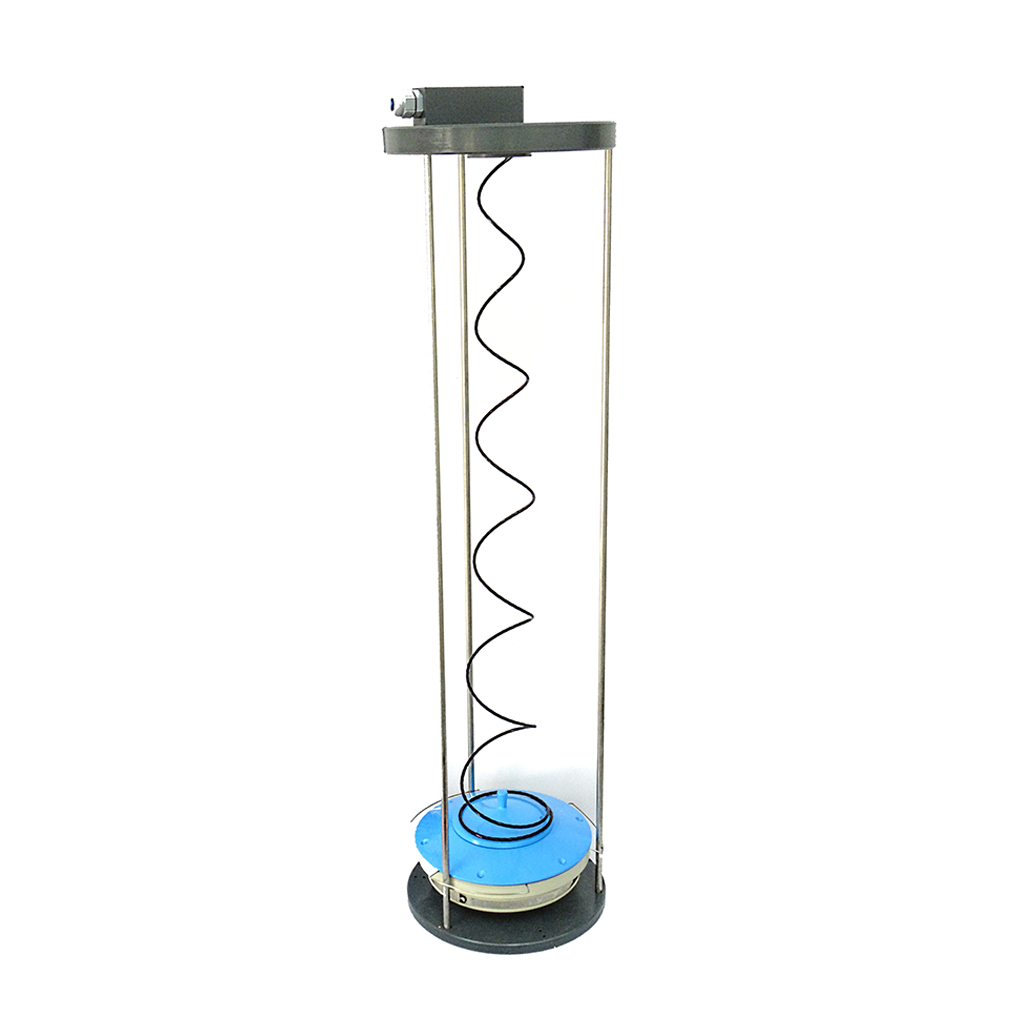Home » All Products » Ethanol in water » Ethanol in water sensor

The LEAKWISE ID-223ET sensor represents a breakthrough in ethanol leak detection and concentration monitoring. As the world’s first continuous field instrument for ethanol in water technology.
The ID-223ET sensor is designed for continuous detection and measurement of ethanol in water or of Gasoline-Ethanol mixtures, specifically targeting sites where ethanol leaks or spills can occur.
This advanced sensor provides real-time monitoring of ethanol concentration, making it invaluable for the ethanol industry in leak detection and environmental protection. Key applications include:
The ID-223ET sensor is part of a LEAKWISE system, consisting of a controller and one or more sensors. This sensor features a high-frequency transmitter mounted on a float built in a guiding cage, designed to maintain precise positioning at the liquid/air interface despite fluctuations in liquid level.
The ID-223ET offers repeatable, continuous monitoring of ethanol concentration, making it an essential tool for environmental protection and regulatory compliance in various industrial applications related to ethanol production, storage, and handling. The ID-223ET is also capable of detecting ethanol in empty sumps before water fills them.
The ID-223ET sensor can also detect other miscible hydrocarbons in water, such as methanol, making it a versatile solution for various industrial applications.
LEAKWISE ID-220 series sensors employ advanced high-frequency Electromagnetic Absorption technique. Each floating sensor contains high-frequency electromagnetic energy transmitting and receiving antennas that provide continuous monitoring of the liquid top surface. This technology exploits the principle that water absorbs more electromagnetic energy than hydrocarbons. Consequently, changes in the water’s absorption rate at the top layer indicate the presence or accumulation of miscible hydrocarbons.
LEAKWISE sensors are engineered to detect and monitor the buildup of both separated and emulsified non-soluble hydrocarbons on water and other aqueous solutions, and the ID-223ET monitors also miscible hydrocarbons. A unique feature of these sensors is their ability to differentiate between wet and dry sump conditions, a capability unmatched by other hydrocarbon monitoring systems, allowing the indication of water level below the minimum required.

It offers:
Constructed with durable materials, the ID-223ET is suitable for long-term monitoring in various industrial applications requiring repeatable measurement of ethanol concentrations in water.
Detection Range: 10% to 100% (by volume) of Ethanol in water with a wide range of salinity
Water Level Variation: Depends on sensor sub-model – see below
Water Lateral Velocity: ~30 cm/sec (~11.8 in/sec) without a stiller; May be doubled with a stiller
Water Temperature: 0 – 70 °C (32 – 158 °F); no freezing
Air Temperature: -10 – 80 °C (14 – 176 °F)
Materials: Hydrocarbon resistant polymers (Polypropylene, Acetal, Polyurethane), 316 stainless steel.
Diameter: 160 mm (6.3 in)
Integral Cable: 10 m (~33 ft.) supplied with sensor, 3 x 18 AWG, blue PVC jacket.
Sub-Models
ID-223ET/500 Floating Range: 40 – 500 mm (1.6 – 19.7 in) – Guiding Cage Dia.: 180 mm (7.1 in)
ID-223ET/2000 Floating Range: 70 – 2000 mm (2.8 – 78.7 in) – Guiding Cage Dia.: 560 mm (22.1 in), or up to 5,000 mm (16.4 ft) on request
ID-223ET/2500 Floating Range: 70 – 2500 mm (2.8 – 98.4 in) – Guiding Cage Dia.: 280 mm (11.0 in), or up to 5,500 mm (18 ft) on request
ID-225/ET Sensor : ATEX Intrinsically Safe: II1G Ex ia IIC T4 Ga -40 °C to +70 °C. Also: IECEx, UKEX and cETLus
PS-220 Enclosure For hazardous areas:
North America – NEMA 7, Class I, Div 1, Groups B, C & D; NEMA 4
Europe ATEX & IECEx – II2(1)GD, Ex db [ia Ga] IIC T6 Gb IP66
Combined System: Approved for operation in hazardous locations when Zener Safety Barriers are added
Performance: EPA – Conforms to Spill Prevention, Control and Countermeasure (SPCC) – Oil Pollution Prevention regulation (40 CFR part 112), and EPA/530/UST-90/009 – Leak Detection Methods
Manufacturing: ISO 9001:2015 Certified
PS-220 Description: PS-220 Controller is an analog signal processor and power supply in a NEMA 4 enclosure that supports a single ID-223ET sensor.
Temperature: Ambient temperature range: -40 – 85 °C (-40 – 185 °F)
Cable length to Sensor: Up to 1,200 m (3,937 ft.) subject to hazardous area restrictions and cable type.
PS-220/RL/LI: Two alarm relays with dry contacts and one fail relay contact: SPDT rated 4A (3A for fail contact) at 250 VAC or 30 VDC, normally open and normally closed, and four status indication lights: Water, Oil, Air/High Oil and Fail. Includes built-in diagnostics.
Wiring Connections: Terminal blocks: 14 AWG maximum for sensor and 4-20 mA output wires; 12 AWG maximum for power and relays wires.
Enclosure Options:
Input Power Options: 220 or 110 VAC (50 – 60 Hz) or 9 – 36 VDC (@ 5 Watts); may also be solar powered.
/420: 4-20 mA analog output proportional to ethanol concentration up to 100%, current source, not isolated.
/420/BG: Bar-Graph display (20 bars) of hydrocarbon thickness in addition to 4-20 mA analog output.
/CEN: Zener Safety Barriers to allow installation of the sensor in hazardous areas.
/AUD: Audio alarm option (available in weather-proof or explosion-proof enclosure)
SLC-220: Digital Signal Processor for up to four ID-220 Series sensors support, with various output options, including relays, lights, 4-20 mA, LCD, Modbus communication in RS-232 and RS-485, and remote cellular connectivity.